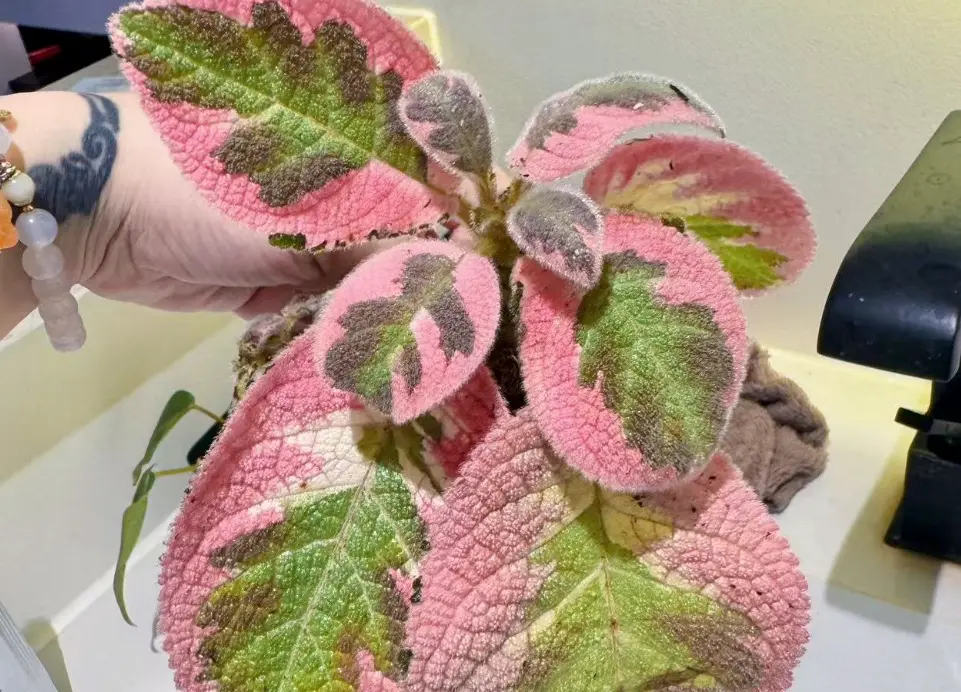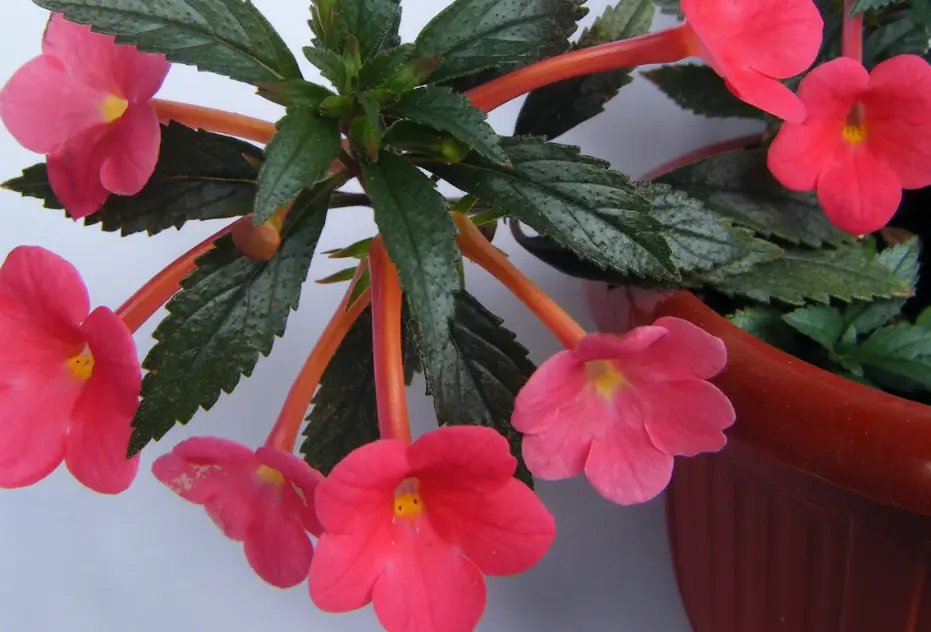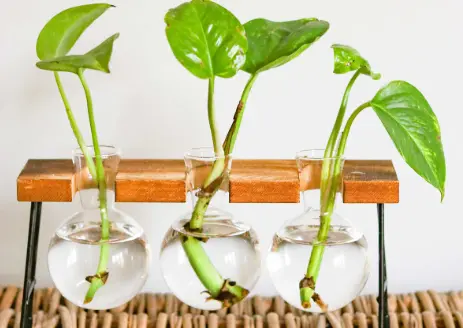Comprehensive Guide to Pink-Foliage Episcia: Cultivars, Leaf Traits, and Care
Episcia, a genus within the Gesneriaceae family, are tropical perennials prized for their vividly colored and textured leaves. While Episcia do produce small, tubular flowers (often red, orange, or violet), their primary ornamental value lies in their ornamental foliage. Among these, pink-foliage cultivars like ‘Picasso’, ‘Pink Smoke’, and ‘Cleopatra’ are especially valued by collectors for their soft pink hues and intricate variegation. This guide provides a detailed overview of pink-foliage Episcia, including their cultivars, growing conditions, and care strategies. 1. Botanical Overview Episcia are stoloniferous perennials that spread via runners. Native to the understory of tropical forests in Central and South America, they thrive in warm, shaded, and humid environments. They are closely related to African violets (Saintpaulia) and Achimenes, but are distinct in habit and appearance. Taxonomic Summary Characteristic Detail Family Gesneriaceae Genus Episcia Common Names Flame Violet, Carpet Plant Growth Form Stolons (runners), groundcover Native Range Central and South America 2. What Are Pink-Foliage Episcia? Pink-foliage Episcia cultivars are selected for their blush tones, pink speckling, or rose-colored variegation on their leaves. Unlike green-dominant or bronze cultivars, these types are grown specifically for foliage interest rather than floral performance. These plants are especially popular in East and Southeast Asia under collector categories like pink brocade foliage or colorful foliage Episcia 3. Notable Pink-Foliage Episcia Cultivars Below is a list of popular pink- or pink-variegated Episcia cultivars, their foliage traits, and collector notes: Cultivar Name Leaf Description Notes Episcia ‘Picasso’ Gray-green leaves with pink to lavender margins and veins Highly decorative; compact spreader Episcia ‘Pink Smoke’ Pale green leaves with diffuse pink and silvery overlay Needs bright indirect light Episcia ‘Cleopatra’ Cream and pink blotches on olive green; puckered texture Slightly larger leaves; dramatic look Episcia ‘Silver Skies’ Silver foliage with faint pink tones Grows well in terrariums Episcia ‘Tropical Topaz’ Light pink and cream variegation with a golden undertone Best color under cool white LED light These cultivars are propagated vegetatively to retain leaf patterns. Tissue culture and stolon cuttings are the most common propagation methods. 4. Foliage vs. Flowering Traits Although Episcia do flower, the focus in these cultivars is clearly on foliage. Flowers tend to be small and short-lived, with color often contrasting or complementing the leaves. Feature Flower-Focused Cultivars Foliage-Focused Cultivars Primary Appeal Bright blooms Variegated or pigmented leaves Flower Color Red, orange, violet Secondary to foliage Foliage Color Range Mostly green Pink, cream, silver, rose Flower Duration Weeks Short, seasonal Collectability Moderate High in Asian foliage markets 5. Growing Conditions for Pink-Foliage Episcia Episcia thrive in warm, humid, and shaded conditions. Their thin leaves and variegation make them sensitive to environmental extremes. Parameter Ideal Condition Light Bright, filtered light (no direct sun) Temperature 20–28°C Humidity 70–85% preferred Watering Keep soil moist but never soggy Soil Light, airy mix (peat + perlite or sphagnum) Fertilizer Low-nitrogen balanced feed monthly Too much direct sunlight can fade or burn pink variegation, while dry air causes leaf curl or edge crisping. 6. Seasonal Growth and Maintenance Episcia are evergreen and do not undergo dormancy like Achimenes. However, their growth slows in cooler months. Spring–Summer Autumn–Winter 7. Propagation Methods A. Stolons (Runners) B. Leaf Cuttings C. Division 8. Common Challenges and Fixes Issue Cause Remedy Faded pink coloration Low light or nutrient imbalance Move to brighter filtered light Leaf burn or browning Direct sun or dry air Add shade, boost humidity Root/stolon rot Overwatering or heavy soil Use airy mix, reduce water Mites or thrips Poor air circulation Use neem oil or insecticidal soap 9. Display and Styling Tips 10. References and Further Reading Episcia cultivars with pink or multicolored foliage offer year-round ornamental value, making them an ideal addition for collectors and interior plant stylists. With the right balance of humidity, warmth, and light, they reward growers with lush carpets of textured leaves that rival even the showiest flowers. If you’re looking for a low-growing, high-impact houseplant, pink-foliage Episcia are among the most rewarding choices.
Comprehensive Guide to Pink-Foliage Episcia: Cultivars, Leaf Traits, and Care Read More »










